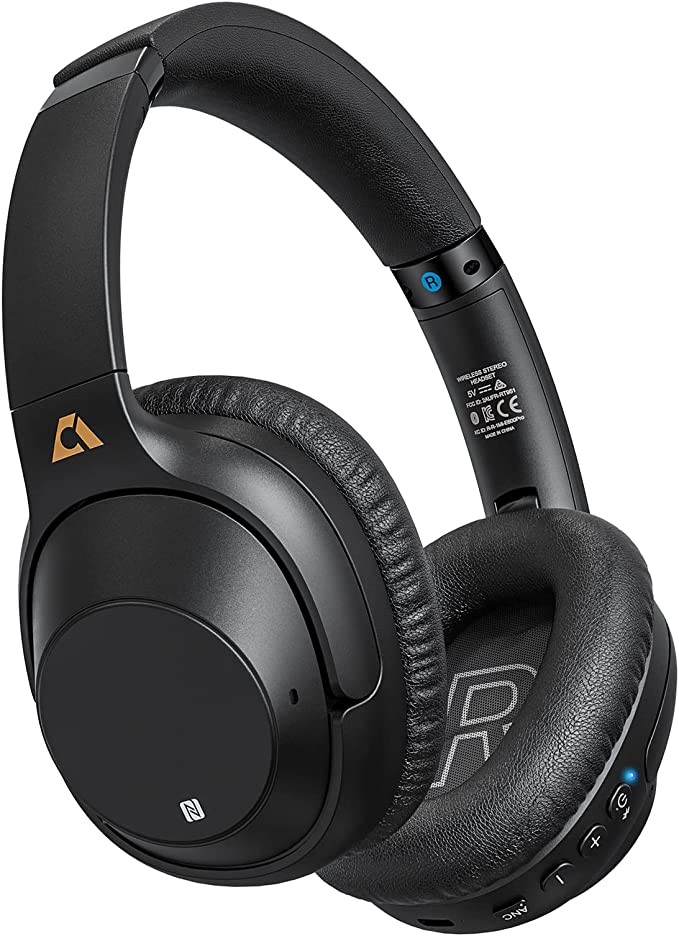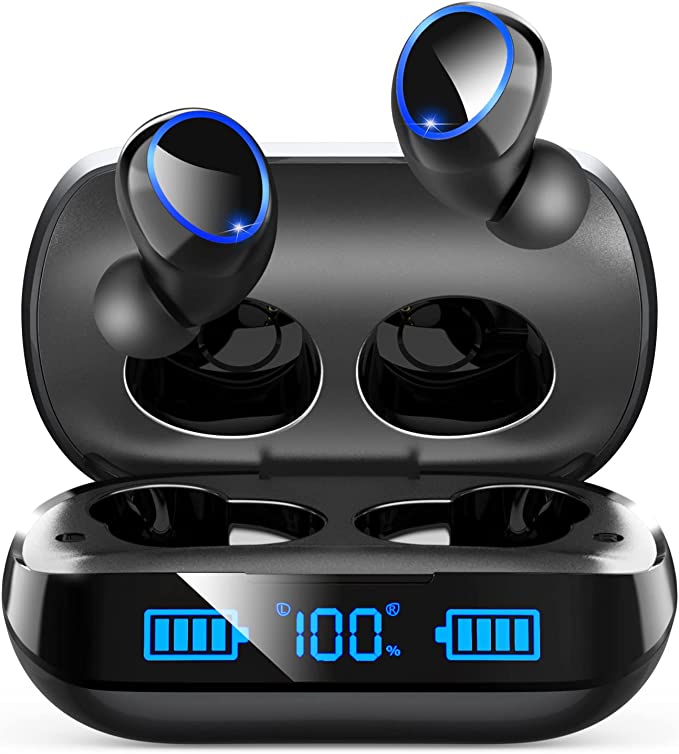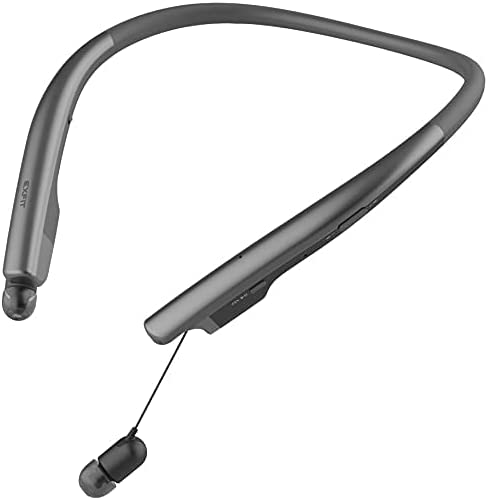In our bustling, ever-connected world, the quest for a personal soundscape—a pocket of focus, an immersive field of music, or simply a moment of undisturbed quiet—has become more pertinent than ever. We seek to curate our auditory experiences, and technology, in its relentless evolution, offers increasingly sophisticated tools for this very purpose. Today, we’ll journey through the technological heart of one such device, the Lavales E500Pro Bluetooth Headphones. Rather than a review, consider this an exploration, a guided tour through the science and engineering principles that allow such headphones to shape the sound that reaches our ears.

Crafting Oases of Quiet: The Intricate Dance of Active Noise Cancellation
The world is a symphony of sounds, some welcome, others less so. Unwanted noise, from the drone of an airplane engine to the chatter of an open office, can be fatiguing and distracting. Enter Active Noise Cancellation (ANC), a technology that feels almost magical in its ability to hush the world around you. But it’s not magic; it’s a fascinating application of physics.
At its core, sound travels in waves, with peaks and troughs. ANC technology works on the principle of destructive interference. Imagine two waves meeting: if one wave’s peak aligns perfectly with another’s trough, they effectively cancel each other out. ANC headphones, like the Lavales E500Pro, are designed to perform this acoustic feat in real-time. They use tiny microphones to “listen” to the ambient noise around you. An internal processor then analyzes this sound and instantaneously generates an “anti-noise” wave—an exact mirror image, 180 degrees out of phase with the incoming noise. When the original noise and this anti-noise meet at your eardrum, they neutralize each other, creating a bubble of perceived silence.
The Lavales E500Pro is described as featuring a Hybrid ANC system, utilizing four built-in ANC microphones. A hybrid approach typically combines feedforward microphones (on the outside of the earcup to catch noise before it reaches you) and feedback microphones (inside the earcup to monitor what you’re actually hearing and correct any residual noise). Lavales states this system can reduce ambient noise by “up to 95%” and achieve a noise reduction of “\ge 35\text{dB}.” While the idea of noise cancellation dates back to the early 20th century, with initial patents aimed at quieting airplane cockpits, its sophisticated application in consumer headphones is a more recent marvel. This technology allows users to find focus in chaotic environments or become more deeply immersed in their music or podcasts. One practical note from the user Q&A for the E500Pro is that its ANC is designed to function optimally with an active Bluetooth connection, as the headset may power down if ANC is used independently for extended periods.

The Unseen Marathoner: Powering Days of Uninterrupted Audio
The liberation of wireless audio comes with a constant companion: the battery. The thought of headphones dying mid-journey or mid-project is a modern-day frustration. Addressing this, the Lavales E500Pro boasts some rather impressive stamina figures. The product information indicates “over 90 hours” of playtime in standard mode and “up to 60 hours” with ANC active—the latter being a more power-intensive operation.
This endurance isn’t just about cramming a large battery in; it’s a testament to advancements in Lithium-Polymer (Li-Po) battery technology and highly efficient power management integrated circuits (PMICs). Li-Po batteries offer a good balance of energy density (how much power they can store for their size and weight) and the ability to be molded into various shapes, suitable for headphone design. The PMICs, meanwhile, act as intelligent regulators, optimizing power consumption by the Bluetooth chip, audio processors, and ANC circuitry.
Furthermore, the E500Pro features quick charging capabilities: a full charge is stated to take 1.5 \text{ to } 2 \text{ hours}, and remarkably, just “5 minutes of charge” can reportedly provide “5 hours of playtime.” This rapid refueling is a carefully controlled process, where the charging system delivers higher current initially while monitoring battery temperature and voltage to ensure safety and longevity. Ninety hours of playtime could mean weeks of typical commutes or multiple long-haul flights without needing a recharge, significantly easing battery anxiety.
The Wireless Symphony: Bluetooth 5.0 and the Pursuit of Audio Fidelity
The dream of untethered audio has been largely realized through Bluetooth technology. The Lavales E500Pro utilizes Bluetooth 5.0, a version that brought notable improvements over its predecessors. For the listener, this generally translates to more stable connections, potentially longer range, faster data transmission (which can be beneficial for higher quality audio), and improved power efficiency, contributing to that long battery life. Lavales highlights an indoor operational range of “\ge 20 \text{ m / } 65.62 \text{ ft},” offering considerable freedom of movement.
Connecting wirelessly is one thing; delivering high-quality sound is another. The E500Pro is described as having a “HiFi chip” and aiming for “CD-level high-fidelity stereo sound quality.” While “HiFi” can be a subjective term, in a wireless context, it involves the Bluetooth chip’s ability to support audio codecs (algorithms that compress and decompress digital audio data) that preserve more of the original audio information. The product information doesn’t specify the exact codecs used, but a capable chipset is fundamental. For gamers, where audio lag can be a critical issue, the E500Pro includes a “Game Mode,” designed to reduce latency and ensure that on-screen action and accompanying sounds are closely synchronized.

The Heartbeat of Your Music: Understanding Drivers and Sound Reproduction
The component most directly responsible for the sound you hear is the driver—a miniature loudspeaker within each earcup. The Lavales E500Pro employs “dual 40mm drivers.” The “40mm” refers to the diameter of the diaphragm, the vibrating membrane that displaces air to create sound waves. Generally, larger diaphragms can move more air and can be more adept at reproducing lower frequencies (bass), though driver quality and enclosure design are equally crucial.
The stated frequency response of “16 \text{ Hz} – 20 \text{ kHz}” for the E500Pro covers the generally accepted range of human hearing. The lower number (16 \text{ Hz}) indicates its capability to reproduce deep bass, while the upper (20 \text{ kHz}) represents the highest treble frequencies. Another specification, impedance, listed as “32\Omega (Ohms),” refers to the electrical resistance the headphones present to the audio source. A 32\Omega impedance is common for portable headphones and is easily driven by smartphones, laptops, and other mobile devices. Ultimately, these specifications provide a technical backdrop to the manufacturer’s claim of “flawless highs, full mids, and deep basses,” but the art of acoustic engineering lies in how these components are harmonized and tuned.
The Embrace of Sound: Where Ergonomics and Materials Science Meet
Beyond the electronics and acoustics, the physical experience of wearing headphones for extended periods is paramount. Comfort is not a mere afterthought but a complex interplay of ergonomics (designing for human use) and materials science. The Lavales E500Pro is described with “ultra-soft protein leather earcups” and “memory foam padding.”
Protein leather is a synthetic material designed to mimic the softness and feel of genuine leather, often with good durability and breathability. Memory foam, a viscoelastic polyurethane material, is prized for its ability to conform to unique contours—in this case, the area around your ears. This adaptability helps distribute pressure more evenly, reducing clamping force and potential discomfort during long listening sessions. Lavales aims for a “marshmallow-like softness” and a “snug fit.” A good fit and seal are also acoustically important, as they help isolate sound passively and can improve the perceived bass response and the effectiveness of ANC. The foldable design and included carrying bag further enhance their practicality for a life on the move.
Being Clearly Heard: The Technology Behind Crisp Conversations
In our interconnected lives, headphones are frequently vital tools for communication. The Lavales E500Pro incorporates built-in microphones and is equipped with “ENC and Sound+ call noise reduction technology.” While ANC focuses on improving your listening experience, Environmental Noise Cancellation (ENC) for calls is about ensuring your voice is transmitted clearly to the person on the other end. This technology uses algorithms, often aided by multiple microphones, to distinguish your voice from surrounding ambient sounds (traffic, wind, office chatter) and suppress the latter. This results in clearer, more intelligible hands-free calls. The inclusion of a “one-button mute feature” adds a layer of practical convenience for managing calls.
A Note on Lavales and What You Unbox
Lavales, as described in the provided information, is a consumer electronics start-up founded in 2021, with a stated dedication to “Focus, Quality, and Consumer Orientation.” When unboxing the E500Pro, users can expect to find the headphones themselves, a 3.5mm male-to-male audio cable, a 3.5mm to Type-C cable, a Type-C charging cable, a carrying bag, and a user manual. This suite of accessories provides flexibility for both wired and wireless use, as well as portability.

Conclusion: Technology Woven into the Fabric of Experience
The Lavales E500Pro Bluetooth Headphones, like many modern audio devices, are a confluence of diverse technologies. From the physics of wave cancellation in ANC to the chemistry of long-lasting batteries, the intricacies of wireless protocols, the mechanics of sound reproduction, and the science of ergonomic materials, each element plays a crucial role in shaping the final user experience. Understanding a little of what goes on “under the hood” can transform our appreciation for these everyday companions, revealing them not just as gadgets, but as sophisticated instruments designed to enhance and manage one of our most vital senses. As technology continues to evolve, our ability to tailor our personal soundscapes will only grow more refined, promising an ever-richer auditory engagement with the world.




